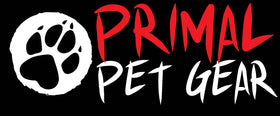Canine Conversations: How Dogs Communicate with Each Other

Dogs, often referred to as "man's best friend," have an incredible ability to communicate with one another. While they may not use words or elaborate gestures like humans, dogs have a rich and nuanced system of communication that relies on body language, vocalizations, and scent marking. In this article, we'll delve into the fascinating world of canine communication and explore how our furry companions interact with each other.
1. Body Language

One of the primary ways dogs communicate with each other is through body language. A dog's posture, movements, and facial expressions can convey a wealth of information to other dogs. Here are some key elements of canine body language:
Tail Wagging: Contrary to popular belief, a wagging tail doesn't always indicate a happy dog. The position and speed of the wag can communicate different emotions. A high wag might signify excitement or happiness, while a low wag can indicate submission or insecurity.
Ears:The position of a dog's ears can reveal its emotional state. Ears held forward indicate attentiveness, while ears flattened against the head suggest fear or submission.
Eye Contact: Direct eye contact between dogs can be seen as a challenge or a sign of aggression. On the other hand, avoiding eye contact can be a sign of submission or friendliness.
Play Bows: Dogs often initiate play with a characteristic "play bow," where they lower their front end while keeping their rear end elevated. This signals their intention to engage in a friendly play session.
2. Vocalizations

Dogs are known for their barks, growls, and whines, which serve as vocal tools for communication. While humans might not always understand the nuances, dogs can discern the meaning behind these sounds. Here's what some common vocalizations can convey:
Barking: Dogs bark for various reasons, such as alerting their owners to a potential threat or signalling their presence to other dogs. The pitch, frequency, and intensity of the bark can convey different messages.
Growling: Growling is often a warning signal. It can signify discomfort, fear, or an intent to protect resources or territory. However, dogs also playfully growl during games or interactions.
Howling: Dogs may howl in response to sirens, music, or to communicate with distant pack members. It's a way for them to establish their presence and coordinate with other dogs.
3. Scent Marking

Dogs have an extraordinary sense of smell, and they use scent marking as a form of communication. They leave their scent on objects, urine-marking, or by rubbing their body against surfaces. This marks territory, conveys reproductive readiness, and can even communicate emotional states to other dogs.
4. Posture and Gestures

Beyond the basics of body language, dogs communicate with subtle gestures and postures. Playful bouncing, submissive crouching, or standing tall and erect can all convey specific messages to other dogs. These gestures help dogs establish social hierarchies and maintain harmony within a group.
Conclusion
Dogs have a rich and intricate system of communication that allows them to interact effectively with one another. Understanding their body language, vocalisations, and scent-marking behaviours can help humans better interpret and respond to their needs and emotions. So, the next time you observe your canine companion interacting with another dog, pay close attention to their communication cues, and you'll gain a deeper appreciation for the intricate world of canine conversations.



